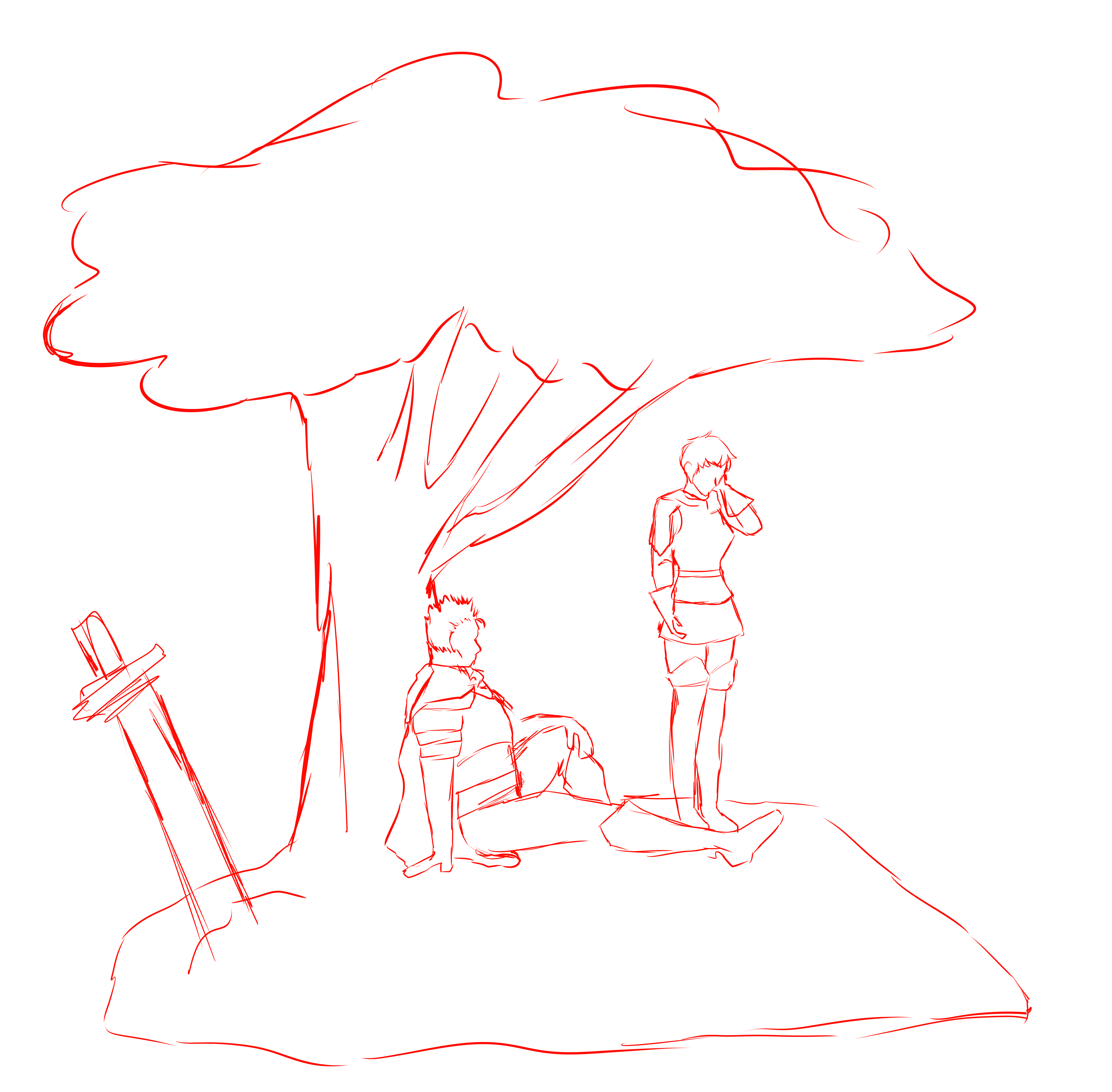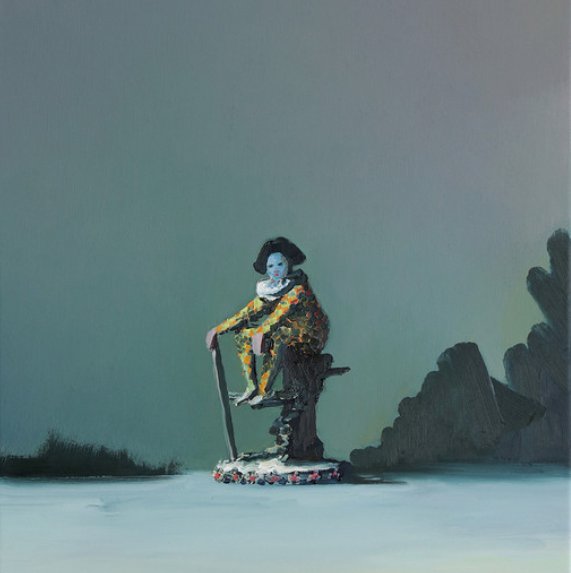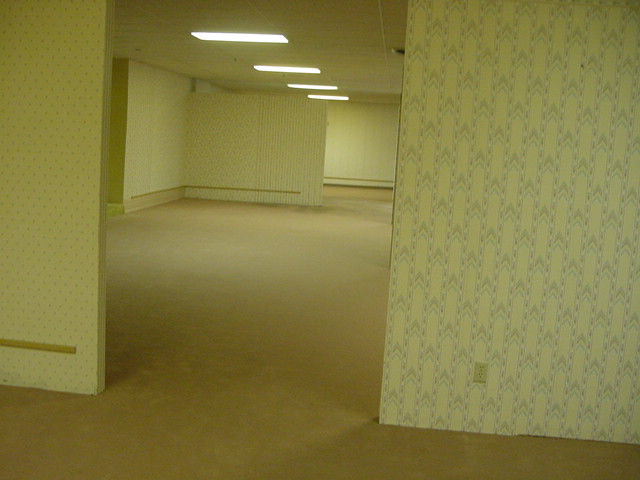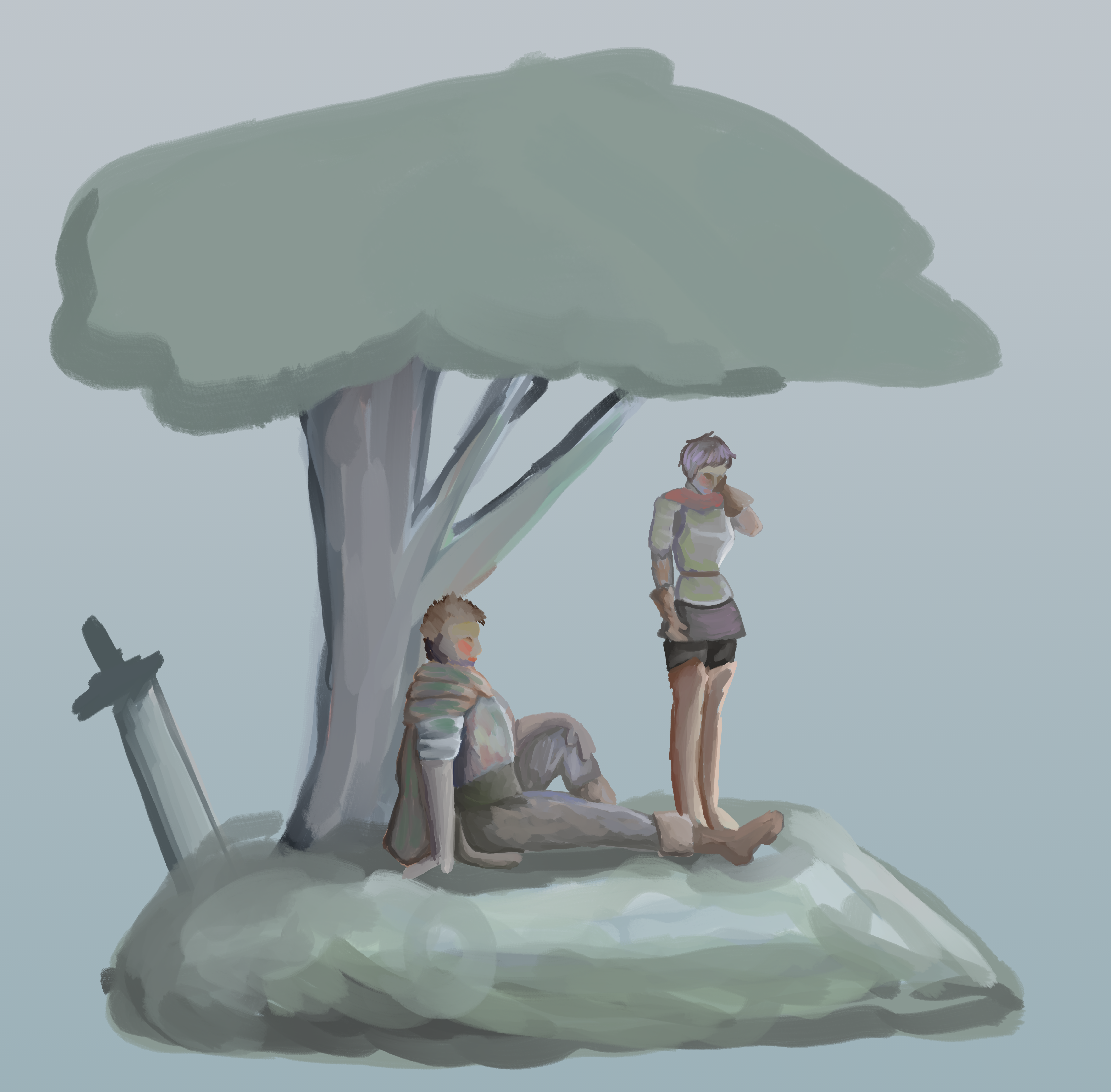This was a personal project I did over the summer. During this time, I had really gotten into liminality and works from Ivan Seal. In this piece, I wanted to do a scene I like to call a "liminal memory" or "liminal scene." All that is here are two people under the tree in this sort of void. I wanted to induce the feeling of having a random memory, but lacking the context of how you had actually gotten there, and details from the memory that might help you are fuzzy. All that is remembered is that one specific moment, as if it exists within its own void.
What first spurred my idea of a "liminal memory" is a mix of getting way into the backrooms wiki and the album "Everywhere at the End of Time." The backrooms explore what's known as a liminal space, which is a "transitional or in-between state or place, often characterized by ambiguity, uncertainty, and a sense of being "betwixt and between" two realities or states. A great real-life example of a liminal space would be a classroom at the end of the year after the teacher has taken all decorations down. It's a shell of itself. All context of what happened in it that year is no longer tangible. But if liminality if often associated with space, then why is my drawing more aligned with a memory? Because memories can also be liminal and devoid of prior context. In art, a great example of this would be "Everywhere at the End of Time" by the Caretaker, and by extension the works of Ivan Seal. Everywhere at the End of Time is a long album about the gradual degredation of those with Alzheimers. As the album goes on, the music gets more distorted, until eventually it's a broken mess where the listener can't even make out which song is happening and where. This represents degrading memory. But the odd thing is that for those with Alzheimers, a lot of their memory still remains deep within, it's just no longer put into a context. It is nonlinear. In that way, memories can also be liminal. Just to clarify, this piece is not about dementia, but it is a good (ableit extreme) example of how memories become liminal. This piece is also less about memory itself, and more about that *feeling* you get when encountering a liminal memory.

My main inspiration for the art style was Ivan Seal. Here's an example of one of his works:


Example of Backrooms:


